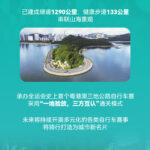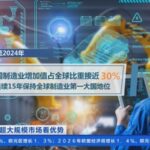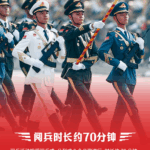At 6 a.m. along the shores of Shenzhen Bay, runners in fluorescent sportswear form a flowing landscape; in the evening, at the community square in Lotus Street, Futian District, residents dance to fitness music while a heated three-on-three basketball game unfolds next door… From dawn to dusk, the energy of exercise flows through every corner of the city—this is the most vivid reflection of Shenzhen’s fitness craze.
As the 15th National Games approach, Shenzhen is using the event as a catalyst to deeply integrate sports into the city’s fabric, making fitness a daily routine for its residents.
Amid the Momentum of the 15th National Games, Urban Sports Facilities Undergo a “Transformation”
“The first time I watched a basketball game at the renovated Shenzhen Sports Center, I looked up and saw the retractable roof—it felt like stepping into a sci-fi movie.” This remark from a basketball enthusiast captures the wonder brought by the upgrade of Shenzhen’s sports venues.
As a key host for the 15th National Games, Shenzhen is leveraging the preparations to transform its sports facilities. Nanshan District has repurposed old factories into a “sports commune” with climbing walls and skate parks; Longgang District has embedded smart fitness pods in community parks, and even the rooftops of urban villages have been converted into mini soccer fields.
This change, driven by the games, is extending Shenzhen’s sports facilities from “professional venues” to “public spaces.” According to statistics, the city has built 46,000 sports facilities, with per capita sports area rising to 2.52 square meters, gradually realizing a 10-minute fitness circle. A total of 186 outdoor smart fitness equipment sets have been installed, used over 61.883 million times. By upgrading old venues and efficiently deploying urban and building-based fitness facilities, more residents are enjoying the convenience of “exercising right at their doorstep.”
Amid a Matrix of Events, Public enthusiasm for Sports Continues to Grow
“The day I secured tickets to the Women’s Basketball Asia Cup, I jumped for joy in the office pantry!” A resident from Luohu still savors the recent sports spectacle. When Han Xu executed a classic center move—driving to the basket for a score—the cheers in Shenzhen Sports Center nearly lifted the roof.
Such sports celebrations have become routine in Shenzhen. The 2025 event calendar, from the Women’s Basketball Asia Cup to the National Swimming Championships, from CBA home games to the Chinese Super League, is packed with events keeping sports fans constantly engaged.
The excitement of professional events is spilling over into community sports. Every weekend, Shenzhen Bay Park’s coastal跑道 hosts various themed runs, from parent-child rainbow runs to corporate relays, with participation often reaching thousands. In the Longhua District community basketball league, neighborhood teams compete from early spring to midsummer. An event organizer noted, “Registration used to require community outreach; now, slots are snapped up within minutes of opening.”
The test events for the 15th National Games have given ordinary citizens a chance to “take center stage.” In the marathon test event, volunteer Liu Fang assisted athletes. “Watching their explosive power at the finish line filled me with energy; now I run two laps in the park every day.”
This synergy between “inside and outside the arena” is turning sports events from mere spectacles into sparks that ignite public passion for exercise.
With Smart Services, Fitness Becomes as Easy as Online Shopping
“Booking a 7 p.m. badminton court takes just three taps on my phone—easier than ordering takeout.” A white-collar worker in the tech park demonstrates the “iShenzhen” app, which shows real-time availability at the three nearest venues, even detailing light and ventilation conditions. This one-click booking platform, launched nearly four years ago, has become an essential tool for Shenzhen residents.
The platform operator reports that over 90% of the city’s sports venues are now integrated into the system, allowing citizens to “book a venue with one click.” What residents appreciate even more are the tangible discounts. A Longhua resident calculated: using a platform voucher, she paid only 12 yuan for two hours of table tennis. “Low costs make it easier to stick with it long-term,” she says with a smile.
Reportedly, Shenzhen distributes 40 million yuan in fitness subsidies annually, available for immediate use with direct deductions, enabling more citizens to enjoy sports.
Smart services go beyond booking. At Futian Sports Park, facial recognition grants access to smart lockers; in Bao’an District’s smart gyms, tread




